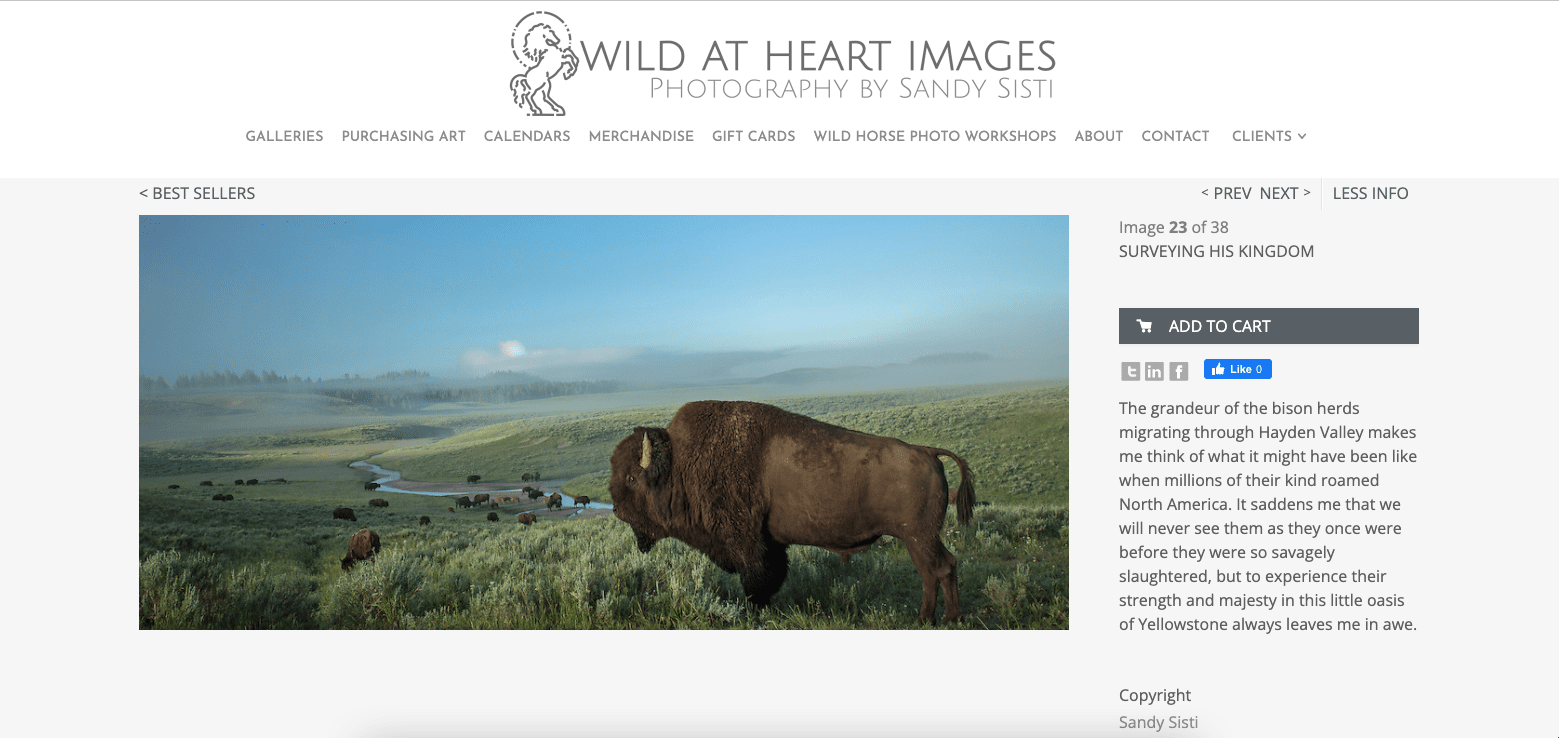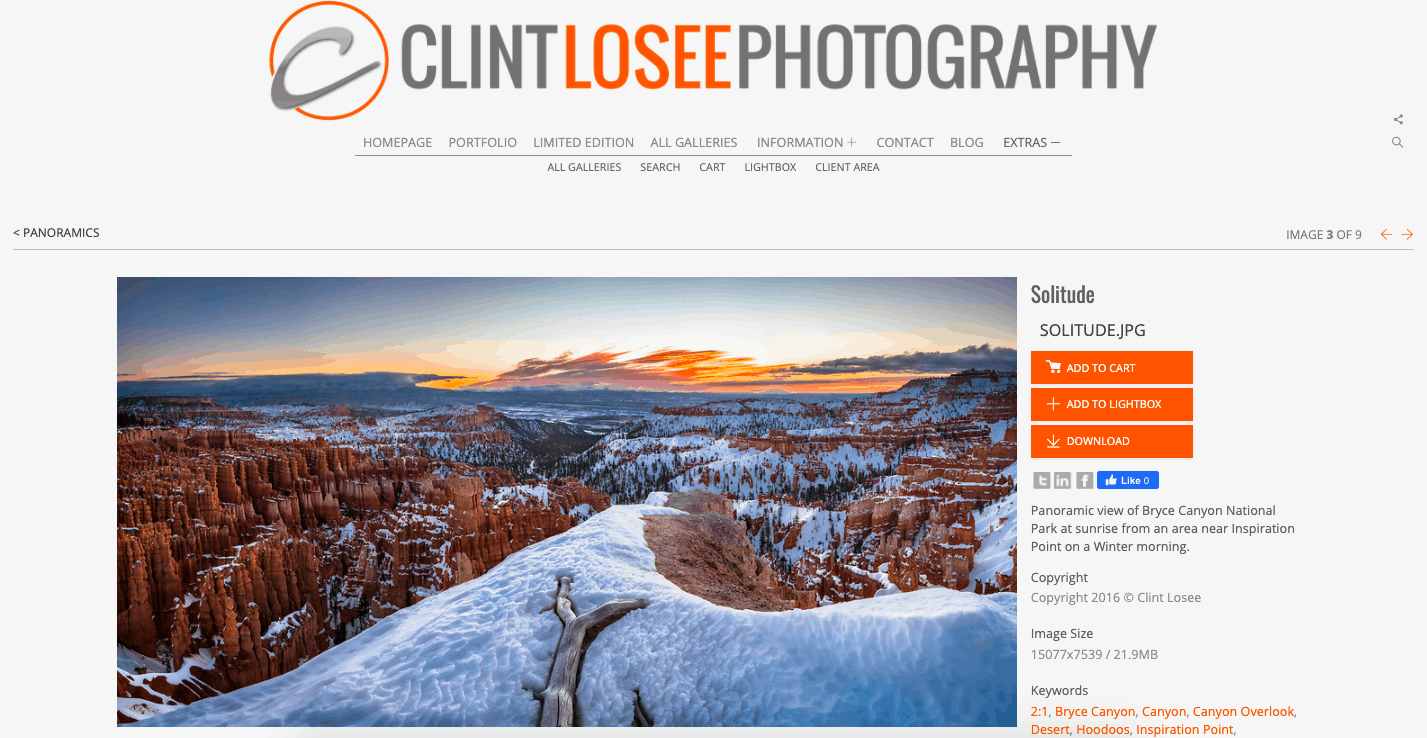Share
10 Ways to Generate Revenue With Online Sales
Online sales have long been the go-to for photographers looking to earn passive income. While you reach out to editors and communicate with clients...

Online sales have long been the go-to for photographers looking to earn passive income. While you reach out to editors and communicate with clients about their latest headshots or food photos, have you considered which images you’ve already made might make you some quick cash?
This holiday season, we want to help you earn more. If online sales weren’t already part of your business strategy before, they’re a great way to earn some extra income now.
Before you get started, you need to make sure you’re set up to sell. Our selling feature allows you to:
> Transact with buyers directly and receive payment instantly
> Set a default currency
> Set a minimum price per order
> Set taxation based on location of the customer
> Review orders before printing
> Replace files (e.g. trade out high resolution files for low res)
> Let customers choose their own cropping preferences
> Charge different rates for different images
> Pick which printer(s) will be fulfilling your orders
> Choose what types of downloads and licenses to sell
Head to our Support Center for step-by-step instructions on setting up for online sales.
Not a PhotoShelter member? Keep reading – these tips apply whether you use our tools or not. Want to try them out? Start your free trial here.
Now, take a look at these revenue-making opportunities.
1. Offer prints and products
Every photographer has work that’s timeless. What are some of your favorite shots that people in your network might want to hang on their wall? Selling prints and products allows you to present your work in a new way your customers will love.
With PhotoShelter, you can offer a totally automated print fulfillment experience through one of our four integrated print labs. Or if you prefer to be a bit more hands-on, you can fulfill orders yourself.
When picking a printer, look into how they do their packaging. The way you package and deliver a print can have a pretty significant effect on the buyer. If boutique and white labeled shipping is what you’re after, check out our self-fulfillment option.
Alternatively, you might find that your customers care less about the unboxing experience and more about the speed of fulfillment or the quality of shipping (i.e. a low lost-mail and damage rate). In this case, automated fulfillment might be a better choice.
Also, make sure to pay attention to what’s actually selling. Test out new products periodically and replace the underselling items with new offerings.

2. Sell digital downloads
“In the past, a nominal sitting fee was augmented by print sales. School photographers often offered a variety pack of images ranging from wallet size to 8×10 to simultaneously simplify purchasing decisions while also increasing their revenue per customer. Nowadays, however, photos are more likely to be delivered, distributed and viewed as digital downloads,” says PhotoShelter co-founder Allen Murabayashi.
“This change in consumer behavior has altered the way photographers price and deliver their images. Selling digital downloads has become a necessary and lucrative mechanism for image delivery.”
When selling downloads with PhotoShelter, you can easily designate different prices for different download sizes, from your original file size to a small 500px download. Think about how your buyers might be using these downloads online, and offer different size ranges to accommodate these use cases. For example, if your buyer is purchasing this download for use on Facebook, they’d be best served with an image size of at least 1200px (on the image’s longest side).
Here are the image size requirements for some of the most popular social platforms:
- Facebook: 1200x630px
- Instagram: 1080×566-1350px
- LinkedIn: 400x400px
- Twitter: 1024x512px
- Pinterest: 1024x512px
- The Knot: 1891x918px
3. License your work: Rights-Managed or Royalty-Free
When was the last time you looked through your archive and to see what might be a good candidate for stock imagery? When embarking on the process, look through past professional shoots but also consider some of your personal work and where it might fit into the stock category. Here, you can set up to license your work, either Rights-Managed or Royalty-Free.
One easy place to start is with your travel photos. If you’re looking to adopt this approach, travel photographer Lola Akinmade Åkerström’s advice is to think critically about how you organize your website and archive. Consider organizing your website or archive by region or subject matter to make it easier for clients to find the type of content they’re looking for. (You can also showcase the work you’ve already done for other brands on your site to add some credibility.)
With Rights-Managed licensing, you are restricting usage for a specified time, place, format, etc. The best part? If you’re using PhotoShelter, you don’t have to know the industry standard prices for every single type of usage. We have a built-in pricing calculator, powered by FotoQuote, so the entire experience is automated for you and your clients. If your client wants to use the photo another time in another way, they would need to purchase a new license for the new usage.
With Royalty-Free licenses, your buyer can use the image any way they like for life. You set the price per image size, and there are no time or usage restrictions for the purchase of that image.
Which licensing model is best for you? It depends on your unique situation and business strategy, but generally, either path can be successful.
Keep in mind that RM photos may not sell as frequently, but they have the potential to bring in a much higher licensing fee when they do. On the flip side, with RF it’s all about high volume. You may see many more licensing sales this way, but you usually won’t be making as much per license.

4. Custom packages
Remember picture day when you were a kid? After your picture was taken you’d get your image package delivery: one 8×10” print for your parents, two 5×7” prints for your grandparents, four 4×6” prints for aunts and uncles and an entire sheet of wallet-sized prints for everyone else. All nostalgia aside, image packages allow you to offer bulk discounts while also providing you with more control over who gets what.
Whether they know it or not, offering a lower number of options for buyers likely will help them decide what to buy. After all, people aren’t normally planning on purchasing 20 prints of various sizes, but when they’re in a package? The choice is a near no-brainer.
Plus, with our packages tool, you can combine prints and downloads in the same package and offer custom package discounts, too. So you’ve got tons of flexibility!
5. Make it feel exclusive
Limited edition art can amplify demand, which leads to higher prices. So think about creating a few limited or special edition prints or products, and price these higher. If you can match the right image with the right audience, you may be sitting on a revenue opportunity. People will pay for something if they see value, so make it your mission to show them. And while scarcity can be a component of limited editions, it can also be used in the sense of a limited time offer.
You might also consider reaching out to existing clients to say you’re offering limited editions just for them. Anything to make them feel like you’re giving them some special treatment!

6. Discounts and promos
With Black Friday and Cyber Monday quickly approaching, sales are on every consumer’s brain. Price breaks aside, coupons are also a great reason to communicate with existing clients and get on the radars of potential new customers.
Another great way to creatively use coupons and grow your client base? Deliver designed promos to your existing clients so they can easily refer you to others in style. Go a step further by offering a discount for each referral. Or embed a form on your blog or website to sign up for your newsletter. Offer special discounts to those who sign up so it’s a win-win for everyone.
All of that said, be careful when dropping prices. You want to attract a larger audience, but you don’t want to only attract clients who worry about price. Generally, you should strive to compete on quality and service instead of price, but that doesn’t mean discounts and promos should completely fall by the wayside.
Get creative and think about how you can still offer special pricing without cheapening your brand. One way to do this is to always remind customers of the value you, and only you, bring to the table. Show them your original prices along with the discounted rates. Make them remember that they’re paying not just for a print or download, but for your unique talents.
7. Sell your knowledge and experience
Knowledge is power. Have a unique skillset or experience? Create a YouTube or Vimeo channel and offer subscriptions. Once you gain a following you can also charge for advertising space, become an affiliate, etc. Plus, you can promote it on your PhotoShelter site and offer free sneak peeks of the videos with our Vimeo video integration.
Another option is to reach out to a brand you’ve worked with in the past – or even just a brand you love – and offer to consult for them. Whether it’s help with metadata tagging or advising on their visual content strategy for their website and social media, you’ve got a lot to offer!
8. Work on your Search Engine Optimization (SEO)
To “win” at search, websites need good SEO – the practice of creating content then building links, social activity and domain strength so that a given page comes up higher in search results.
If you are shooting less, and have some available time, it would be well-spent doing all things SEO. You hear everyone saying those three letters over and over, “S-E-O,” and for good reason. Search Engine Optimization is of critical importance, and if you can turn some free time into better search engine rankings, it will pay off for years to come.
The bottom line? If people can find you and your work easily, that leads to more website traffic. And if you’re set up for sales, that means more revenue opportunities for you.
Here’s another hard truth: good SEO doesn’t even care about the quality of your work. If you win at SEO you will beat out a lot of your competitors, regardless of who “deserves” it.
9. Make it easy for buyers to buy
Did you know customers can buy from your PhotoShelter website on any device? It might be worth promoting that everyone can use those trusty smartphones to purchase new photos for their homes or personal collections.
Plus, consider renaming your “Archive” navigation item on your site to something like “Photo Store” and see if that helps boost sales. You’ll also want to be sure that your contact page is up to date with your information so potential buyers can contact you without a hassle. Or consider creating a custom page that talks more about your pricing and services. A little personality and context can go a long way and separate you from the pack.
One of the best ways to see where the buying process might break down is to ask a friend, family member or trusted client to go through with a purchase on your website. Ask what could be better, easier, more clear and make adjustments from there. You might also consider ordering test prints yourself to experience the purchasing UI the way a real client would. If you’re using automated print fulfillment through one of our integrated labs, you’ll get to see the print quality firsthand, as well.
10. Be creative and stay positive!
Be brave and try new things! See what works best for you and your clients.
- Take advantage of the holiday and have a sale.
- Promote yourself more on your social media channels.
- Weave photo sales into your next blog post or newsletter.
- Drop a hint in an interview with a publication.
- Barter with a local business or community message board to see if they would be willing to help promote your online sales.
Any way you swing it, it’s beneficial to get set up for online sales and spend some time on marketing and SEO. Take some time to look into where you might be able to make a little extra income and start trying new things. No matter what, providing a way to find you online and buy your photos will help you in the long run.
We hope these suggestions motivate you to consider new ways of selling your photography this holiday season (and beyond)!


